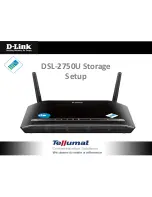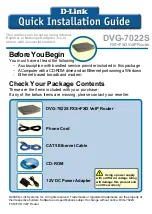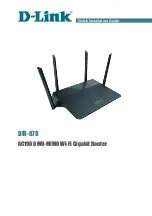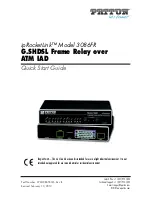
Foundry NetIron MLX Series Installation and Basic Configuration Guide
5-14
© 2008 Foundry Networks, Inc.
December 2008
Configuring Interface Module Boot Parameters
The Ethernet interface module has its own system software and boots after the management module boots. By
default, the following boot-related events occur:
•
The NetIron MLX Series system synchronizes or prompts you to synchronize the interface modules’ Multi-
Service IronWare images between the management module and the interface modules.
•
The interface modules boot from a source specified by the management module (the default source is a
primary Multi-Service IronWare image in the interface modules’ flash memory).
If desired, you can change the following:
•
Disable the synchronization of IronWare images between the management and all interface modules. You can
also initiate an immediate synchronization.
•
Change the boot source of one or all interface modules.
Synchronizing the Interface Module’s Multi-Service IronWare Images Between Management and
Interface Modules
An interface module can have two
Multi-Service IronWare images: primary and secondary. These images contain
the Layer 1 – 3 software that the interface modules run. These images reside in the interface module’s flash
memory. Either the primary or secondary image is run by the interface module from this location.
If you copy the primary and/or secondary Multi-Service IronWare image to all interface modules using the
copy
command with the
all
keyword, the management module makes a copy of the file and stores it in its code flash
under the names lp-primary-0 or lp-secondary-0. The images are stored in this location only and are not run by the
management module or the interface modules. If you copy the primary and/or secondary Multi-Service IronWare
image to a specified chassis slot using the
copy
command with the <chassis-slot-number> parameter, the
management module does not make a copy of the file.
If the management module has a copy of the primary and/or secondary Multi-Service IronWare image in its code
flash, by default, the NetIron MLX Series system synchronizes or prompts you to synchronize the interface
modules’ Multi-Service IronWare images between the management module and the interface modules during
bootup. When the NetIron MLX Series system synchronizes the Multi-Service IronWare images, the management
module copies the Multi-Service IronWare images from its code flash to the interface modules’ code flash (the
interface modules’ default boot source).
The system allows you to manage synchronization of the Multi-Service IronWare images between management
and interface modules in the following situations:
•
You are prompted to synchronize the Multi-Service IronWare images during bootup.
•
You want to initiate an immediate synchronization; for example, you want an immediate update of the Multi-
Service IronWare images on one or all interface modules.
•
You want to disable synchronization; for example, you have upgraded the Multi-Service IronWare image of
one interface module but want to continue running the older image on all other interface modules.
The following section discuss how to manage the Multi-Service IronWare image synchronization in these
situations.
Synchronizing the Interface Modules’ Multi-Service IronWare Images During Bootup
By default, the NetIron MLX Series system checks the Multi-Service IronWare images in the interface module’s
flash memory during boot to ensure they are the same as the Multi-Service IronWare images in the management
module’s flash memory. If an interface module does not have a Multi-Service IronWare image, the system
automatically downloads the image from the management module’s flash memory to the interface module’s flash
memory.
If an interface module has different Multi-Service IronWare images, the system prompts you to do the following:
•
If you want to update the primary and secondary Multi-Service IronWare images in the interface module’s
flash memory with the images in the management module’s flash memory, enter the
lp cont-boot sync
<slot-number>
command at the Privileged EXEC prompt.
•
If you want to retain the Multi-Service IronWare images in the interface module’s flash memory, enter the
lp
















































